
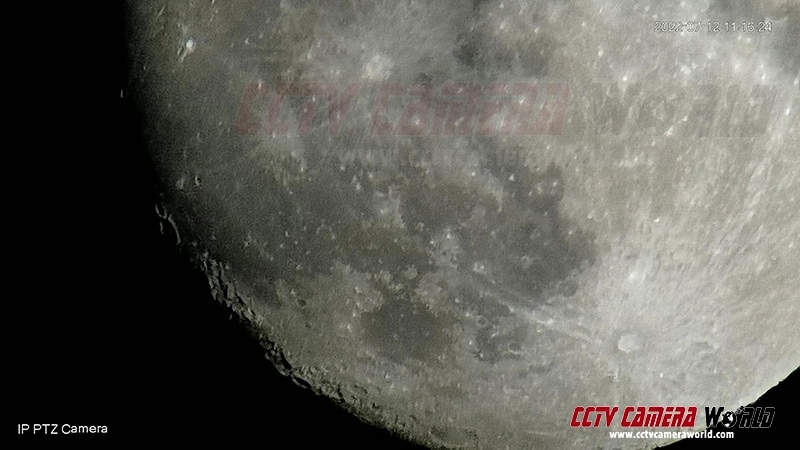
The Natural History Museum in London is a treasure trove of scientific knowledge and unimaginable wonders. The regal brown-stone building houses awe-inspiring displays: a blue whale skeleton named “Hope” hanging in the entrance hall, a dazzling array of intricate fossils and minerals, and a first edition of “On the Origin of Species by Means of Natural Selection” by Charles Darwin.
Above the breathtaking displays, like a hovering guardian angel on the roof of the imposing building, stands an unassuming CCTV camera. In the relative quiet above the bustling city streets below, the repurposed security camera diligently points upward at the heavens, its vigilant eye scanning the sky.

What it captures on seemingly ordinary evenings would ignite the imaginations of astronomers around the world. In strokes of cosmic luck, it witnesses and records spectacular meteor showers, often unseen by its more advanced big brothers. Dust, ice, and rock entering the Earth’s atmosphere at a dazzling 160,000 miles per hour erupt in flashes of light and heat, streaking through the darkness.
The Natural History Museum in London isn't the only place where remarkable discoveries are made. Citizen science projects around the world are harnessing the power of readily available technology, including repurposed security cameras, to unlock cosmic secrets. These projects empower curious individuals to contribute to our understanding of the universe. Take, for example, the prolific Galaxy Zoo project, which has leveraged the collective human eye to classify millions of galaxies—a task impossible for professional astronomers alone.
The Traditional Role of Security Cameras
Historically, security cameras have served a more mundane, terrestrial purpose. They stalwartly safeguard homes and businesses for property protection. There is debate in some circles about the effectiveness of these devices in preventing crime. However, the data shows that camera surveillance does work. One 40-year review showed a dip of 13 percent in crime rates in areas with CCTV coverage. Yet, their innovative application in astronomy reveals untapped potential.
Unlike telescopes, which are often costly and require specialized expertise to operate, security cameras offer a cost-effective and accessible alternative. Their relative portability makes it a breeze to deploy and re-deploy for personalized setup.
Their pervasiveness means they can be employed as a group for wider coverage. This expands the reach of astronomical observation to urban and suburban areas previously overlooked by traditional observatories.
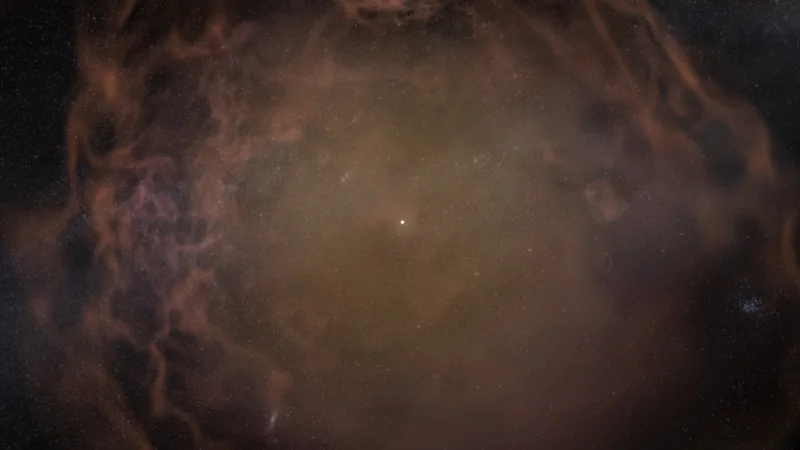
Responding to the Skeptics
Video surveillance of the night sky isn’t new. It has a rich history of usage in the amateur astronomy community and has only grown in popularity over time.
However, skepticism may linger regarding the effectiveness of security cameras for astronomical use. For example, critics may question their image quality, sensitivity, and ability to capture celestial phenomena amidst the glare of city lights.
While traditional astronomical equipment offers undeniable advantages, advancements in security camera technology are making them increasingly attractive for amateur astronomy. Improved sensor technology translates to sharper images, and sophisticated image processing algorithms enhance low-light performance. This allows hobbyists to capture celestial objects with greater clarity, even in urban environments with light pollution.
A security camera recording system becomes more attractive to the astronomy community when you consider the core benefits of video over still shots or direct observation. Recorded video holds the hope of catching the unexpected. While the movements of planets and other astronomical bodies can be calculated in minute detail, random and unexpected events could easily be missed.
For example, the nearby T Coronae Borealis star system is set to produce a recurring nova explosion. While the event happens on a semi-regular schedule—roughly every 79 years—it could be easy to miss during the late spring or summer of 2024. A means to conduct regular, continuous recording could address this roadblock.
Unconventional methods hold the promise of scientific advancement in areas other than astronomical viewing as well. There’s a growing trend to turn to inexpensive and readily available technology to assist scientific research. The University of Houston documented a system they developed to detect lead in tap water at commonly recognized dangerous levels. The method involves using a lens printed on a standard inkjet printer and a low-end smartphone with an 8-megapixel camera. Portable and easy to operate, it identified concentrations of lead at 5 parts per billion, with sensitivity reaching 1.37 parts per billion in deionized water.
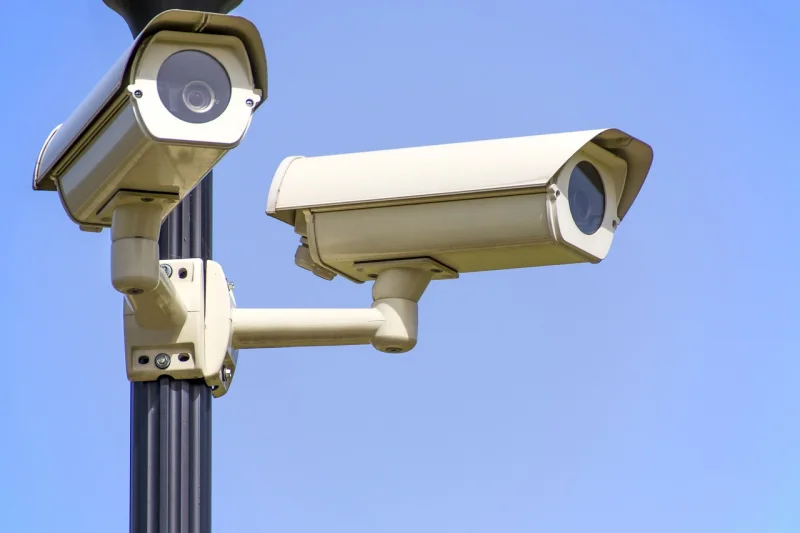
What are Some of the Unexpected Advantages of Security Cameras in Astronomy?
Security cameras possess unique advantages that make them invaluable assets in the pursuit of cosmic discovery.
Their omnipresent operation ensures continuous monitoring of the night sky, capturing fleeting events that might elude even the most vigilant human observer.
By their very nature, security cameras are designed to be non-intrusive. This minimizes disruption to the surrounding environment, making them ideal for sensitive astronomical studies.
Security cameras come in a wide range of styles and price ranges. Amateur astronomers who are just starting might look to this type of device for their first foray into stellar recording. Making astronomy accessible through everyday technology heralds a new era of discovery, where amateurs and professionals alike can contribute to our understanding of the cosmos.
As security cameras continue to peer into the depths of space, they serve as a testament to the power of innovation in unlocking the secrets of the universe. In the stillness of the night, these unassuming devices stand as silent sentinels, revealing the wonders that lie beyond our earthly realm.

Frequently Asked Questions About Security Cameras in Astronomical Observation
How Can Security Cameras Contribute to Astronomy?
While not replacing traditional astronomical equipment, security cameras equipped with advanced sensors and high-resolution imaging capabilities can offer valuable contributions to astronomical research in several ways:
- Sky Monitoring: Security cameras installed strategically can provide continuous surveillance of the night sky, capturing celestial events such as meteor showers, comets, and transient phenomena like supernovae or asteroid impacts.
- All-Sky Surveillance: With a wide-angle lens, some security cameras can capture panoramic views of the entire sky, unlike traditional telescopes with limited fields of view. This capability improves the odds of detecting rare or unexpected astronomical events.
- Time-Lapse Imaging: By recording consecutive frames over extended periods, security cameras enable the creation of time-lapse videos showcasing dynamic processes such as the movement of celestial bodies or changes in atmospheric conditions like auroras.
- Citizen-Scientist Initiatives: Leveraging the ubiquity of security cameras in urban and rural areas, astronomers can engage with citizen scientists in collaborative projects. Data utilized from distributed camera networks can aid in large-scale surveys or monitoring campaigns.
What Discoveries Have Security Cameras Enabled?
Pairing security cameras with astronomical research has led to several noteworthy discoveries and contributions to our understanding of the cosmos:
Meteor Showers and Fireballs
Security cameras have played a crucial role in detecting and cataloging meteor showers and fireball events, providing valuable data for studying the composition and dynamics of meteors entering Earth's atmosphere.
Transient Events
Networks of security cameras have captured rare astronomical phenomena, including bright meteors, bolides, and occasional satellite or space debris passages.
The table below describes the differences between some of these fleeting celestial events.
| Object | Description | Size | Source |
|---|---|---|---|
| Comet | A dirty snowball made up of ice, dust, and frozen gases. When a comet approaches the sun, the ice sublimates and forms a tail that trails behind the comet. | Nucleus: 10s of kilometers; Tail: Millions of kilometers | https://science.nasa.gov/solar-system/comets/ |
| Asteroid | A rocky object orbiting the sun. Asteroids are leftovers from the formation of our solar system. | 1 meter to hundreds of kilometers in diameter | https://spaceplace.nasa.gov/asteroid/en/ |
| Meteoroid | A small piece of rock or metal orbiting the sun. Meteoroids are much smaller than asteroids. | Microns to 1 meter | https://science.nasa.gov/solar-system/meteors-meteorites/ |
| Meteor Shower | A phenomenon that occurs when the Earth passes through a stream of debris left behind by a comet. The debris burns up in Earth's atmosphere, creating streaks of light in the sky. | N/A | https://spaceplace.nasa.gov/meteor-shower/ |
| Meteor | The streak of light that is produced when a meteoroid burns up in Earth's atmosphere. | N/A | https://science.nasa.gov/solar-system/meteors-meteorites/ |
| Fireball | A very bright meteor. Fireballs are brighter than the planet Venus. | N/A | https://www.amsmeteors.org/fireballs/faqf/ |
| Bolide | A fireball that explodes in Earth's atmosphere. Bolides can be so bright that they can cast shadows. | N/A | https://www.nasa.gov/solar-system/u-s-space-force-releases-decades-of-bolide-data-to-nasa-for-planetary-defense-studies/ |
| Meteorite | A meteoroid that reaches Earth's surface. Meteorites can be made of rock, metal, or a mixture of both. | Varies | https://science.nasa.gov/solar-system/meteors-meteorites/ |
Variable Stars and Exoplanet Transits
Highly sensitive security cameras have the potential to be repurposed for scientific observation. With their ability to capture faint light changes, they can be used to monitor the brightness of variable stars, stars whose luminosity fluctuates. This data can contribute to our understanding of these celestial objects. Additionally, these cameras might be able to spot exoplanet transits, which are brief periods when a planet passes in front of a star and causes it to dim. While such discoveries are challenging and require careful analysis, successful applications could provide valuable insights into the characterization of distant planetary systems.
Space Weather Monitoring
By observing auroras and other atmospheric phenomena, security cameras contribute to our understanding of space weather dynamics and their impact on Earth's magnetosphere.
For instance, storm chaser Jordan Carruthers posted to YouTube a video of the Northern Lights captured via a security camera that captured impressive visuals while he slept after a failed attempt at direct viewing.
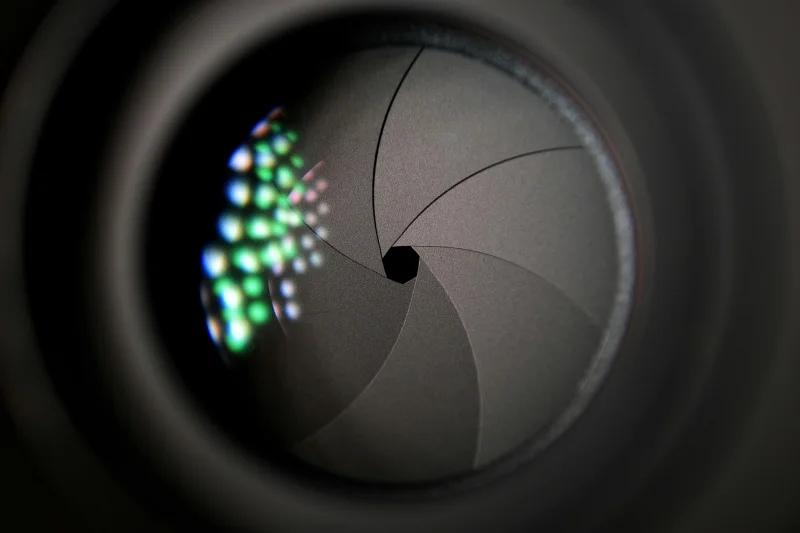
Can Any Security Camera Be Used for Astronomical Observation and Recording?
- Sensor Size and Sensitivity: Cameras with larger sensors and higher sensitivity are preferable for capturing faint astronomical objects and minimizing noise in low-light conditions.
- Resolution and Dynamic Range: High-resolution cameras with wide dynamic range capabilities are essential for capturing fine details in celestial imagery and preserving image integrity in views that have varying light levels.
- Lens Quality and Aperture: Quality lenses with low distortion and high aperture values allow for crisp, clear imaging of celestial objects and maximize light-gathering efficiency.
- Integration and Control: Cameras that support remote operation, programmable exposure settings, and compatibility with astronomical software packages allow seamless integration into observatory setups and data acquisition efforts.
A setup such as the 4K Night Vision PTZ Camera with 48X Zoom from Avalonix is a nice blend of premium features that can provide the functionality needed for astronomical viewing.
Adapting Security Cameras for Astronomical Observation
- Cooling Systems: Implementing passive or active cooling systems helps mitigate sensor heat buildup and reduce noise levels during long-exposure imaging.
- Filter Selection: Installing specialized filters, such as narrowband or broadband filters, allows astronomers to selectively capture specific wavelengths of light relevant to their research objectives.
- Mounting and Stability: Secure mounting systems and vibration-damping mechanisms are essential for minimizing camera shake and ensuring stable imaging platforms, particularly in outdoor environments exposed to wind and temperature fluctuations.
- Data Management and Analysis: Developing software tools for real-time data processing, image calibration, and astronomical object identification streamlines data management tasks and improves scientific usage of captured images.
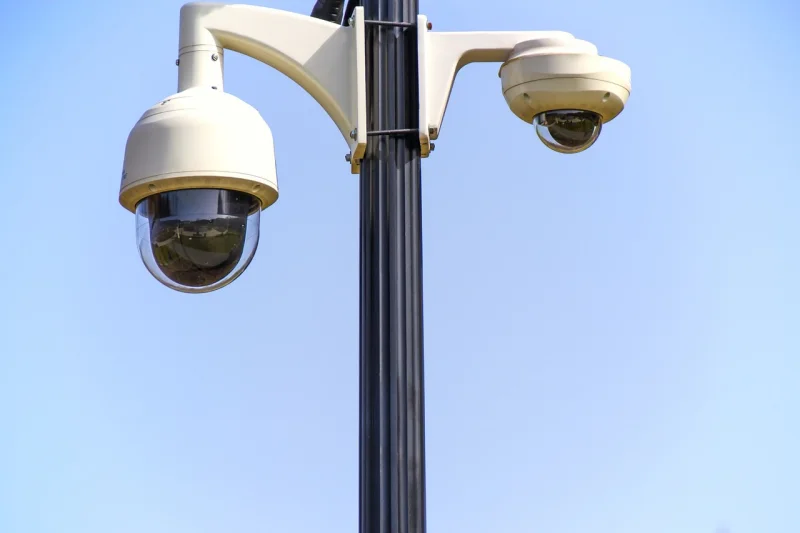
Limitations of Security Cameras for Astronomy
Repurposing security cameras for astronomical observation certainly has its advantages. While this approach offers affordability and accessibility, it also comes with its own set of challenges. Let's explore some of these obstacles and practical solutions for overcoming them.
Limited Sensor Sensitivity
Security cameras typically have smaller sensors than telescopes, making them less sensitive to faint celestial objects like galaxies and nebulae. This makes it difficult to capture faint objects or details in deep-sky observations.
Solution: Invest in security cameras with larger sensors or ones specifically designed for low-light conditions. Additionally, consider using longer exposure times to capture more light from distant objects or using a software solution that allows you to create composite images from several individual frames.
Lens Design
Security camera lenses may not be optimized for astronomical observation. They might introduce optical aberrations that distort starlight, affecting image quality. This can lead to blurry or distorted images of celestial objects.
Solution: Security camera lenses are primarily designed for security purposes, not astronomical observation. They may not be optimized to capture the fine details of celestial objects or correct for optical aberrations that can distort starlight. Some mitigation is possible with high-quality lenses and software correction, but these limitations remain for capturing faint details.
Noise and Interference
Many security cameras have a fixed field of view, limiting the range of celestial objects that can be observed in a single frame. This may require frequent adjustments or panning to track moving objects across the sky
Solution: Utilize pan-tilt-zoom (PTZ) security cameras or motorized mounts to adjust the field of view or attempt to track celestial objects as they move across the sky.
Weather Vulnerability
Outdoor security cameras are exposed to the elements, including rain, snow, and humidity, which can degrade image quality and damage equipment.
Solution: Install weatherproof enclosures or housing to protect cameras from environmental factors. Regular maintenance and cleaning can also help prolong the lifespan of the equipment.
Power Supply Dependence
Security cameras typically require a stable power supply, which can be challenging to maintain in remote or off-grid locations.
Solution: Consider using solar panels or battery packs to power security cameras in areas without access to traditional electricity sources. Implementing energy-efficient hardware and reducing power consumption can also extend operating times.
Light Pollution
Urban areas often suffer from light pollution, which can overwhelm security cameras and obscure faint astronomical objects.
Solution: Position cameras in locations with minimal light pollution, such as remote rural areas or designated dark-sky reserves. Additionally, use light shields or hoods to block out unwanted artificial light sources.
Data Storage and Management
High-resolution images captured by security cameras can quickly consume storage space, requiring efficient data management solutions.
Solution: Employ cloud-based storage services or network-attached storage (NAS) systems to store and manage large volumes of image data. Implementing automated backup routines and compression algorithms can help optimize storage efficiency.
Processing Power for Data Analysis
While security cameras offer a cost-effective way to collect astronomical data, analyzing large volumes of images, particularly for faint objects, can require significant processing power and specialized software. Professional astronomical research often involves sophisticated instruments and powerful computers to process and analyze complex datasets from telescopes. Astronomers interested in using security camera data may need to invest in additional computing resources or utilize cloud-based processing platforms to handle the data analysis workload.
Solutions:
- Targeting data collection for specific phenomena can reduce the amount of data requiring processing.
- Data pre-processing techniques can help reduce data size and noise before detailed analysis.
- Cloud-based processing platforms offer pay-as-you-go options for astronomers to leverage powerful computing resources.
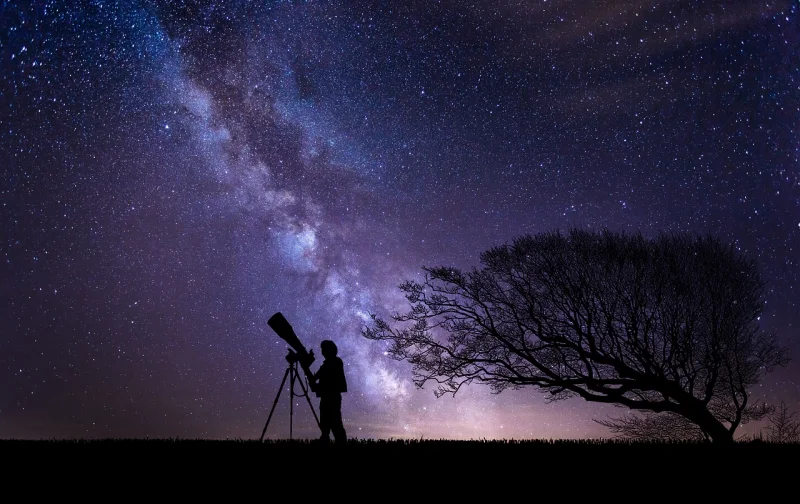
The Path to the Stars
In conclusion, security cameras offer a versatile and cost-effective resource for astronomical observation, unlocking new opportunities for discovery and exploration. By harnessing the potential of security camera networks and implementing personalized adaptations for astronomical research, astronomers can expand their observational reach and deepen their understanding of the universe's mysteries.
Remember that when you gaze up at the desolate reaches of space, you are not really alone. Communities of like-minded hobbyists are right there with you. Connect with community forums like Cloudy Nights or Backyard Astronomy Space to share your findings and get support with troubleshooting issues.
As technology continues to advance, the alliance between security cameras and astronomy promises to propel astronomy professionals and hobbyists toward new frontiers of knowledge and inspire future generations of stargazers.
Resources
- Sky & Telescope - A comprehensive resource on various types of astronomical video cameras, including the use of astro video cameras for observing faint objects. This site can enrich your discussion on adapting security cameras for astronomical uses. Visit Sky & Telescope
- American Astronomical Society (AAS) - Known for its thorough coverage of astronomical events and safety measures related to observing the sky, the AAS also provides credibility on standards and practices in the astronomy community. Their guidelines on safe solar viewing can be particularly useful for discussing camera filters and protective measures. Visit AAS
- AstronomerGuide - Offers practical advice on setting up backyard observatories, which can be beneficial if discussing how amateur astronomers can use security cameras within their own observatories. Visit AstronomerGuide
- BBC Sky at Night Magazine - Known for its reviews and product recommendations, this could be a good reference for discussing specific models of cameras that are suitable for sky watching. Visit BBC Sky at Night Magazine
- Harvard University's Astronomical Data Center - Provides access to astronomical data and tools, useful for those looking to delve deeper into the data analysis aspect of using security cameras for astronomical observation. Visit Harvard's Astronomical Data Center
- AstroBackyard - This site offers a range of resources and reviews for astronomy enthusiasts, including details about the best astronomy apps and tools that can enhance the use of security cameras in stargazing. Visit AstroBackyard
- Stargazing.Me.Uk - Features a list of top astronomy websites that include practical advice on observing the sky, astrophotography tips, and useful links for amateur astronomers which could support the integration of security cameras into amateur astronomical pursuits. Visit Stargazing.Me.Uk
- Explainingspace.com - Offers a collection of the best space and astronomy websites, highlighting tools and interactive sky charts that can improve the use of security cameras for astronomical observation. Visit Explainingspace.com
- Amateur Astronomers Association (AAA) - Provides resources and information on large data handling for amateur astronomers, which can be particularly useful when dealing with the high volume of data collected through security cameras used for sky monitoring. Visit Amateur Astronomers Association
- EarthSky - Provides comprehensive information on astronomy and space, along with tools and tips for amateur astronomers, which could be especially useful in discussing the use of security cameras for night sky observations. Visit EarthSky

